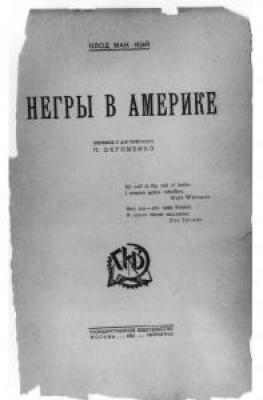Born Festus Claudius McKay to a Jamaican peasant family, McKay would write poems that inspired not only the Harlem Renaissance of the 1920s but also the Black Arts Movement of the 1960s. As a young child, McKay received a background in both classical and British literature and philosophy and before too long began to write poems in traditional forms. The sonnet tradition he imitated as a child he would dramatically transform as a young man in his 20s. McKay would take the romance and the consolations of the historical sonnet and replace them with a hand grenade of protest. Compressed and rhetorically proficient anger would now be among the sonnet's resources and its cultural aims; the form would never be quite the same again.
His most influential book of poems, Harlem Shadows, appeared in 1922. A founding text of the Harlem Renaissance, many of its poems had inspired African American writers when they appeared in journals earlier. Even this small selection gives us a rich and multifaceted portrait of race in America, but the poems demand careful reading. "If We Must Die" should be read in the context of the race riots and the anticommunist Red Scare of 1919. "The White City" is not an attack on white people but rather a critique of race-based economic and political power. The next decade of McKay's life was spent mostly in France, where he wrote two novels, Home to Harlem (1928) and Banjo (1929), struggled with illness, and finally returned to the U.S. in 1934. He would later write two autobiographical volumes and a nonfiction study, Harlem: Negro Metropolis (1940). Four years later he converted to Catholicism, associating himself with the progressive wing of Catholic activism. Although he became disenchanted with Soviet communism, he remained committed to international socialism. His final poems still carry the force of the work he had done decades earlier.



